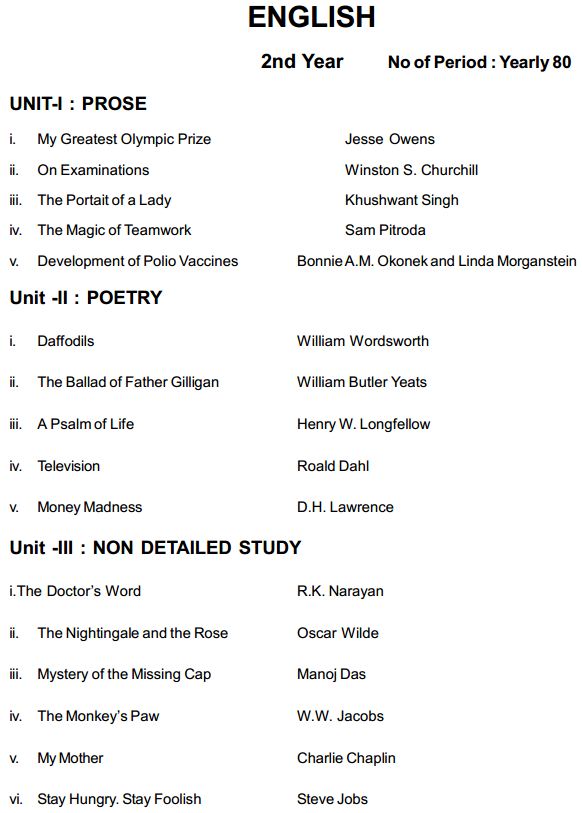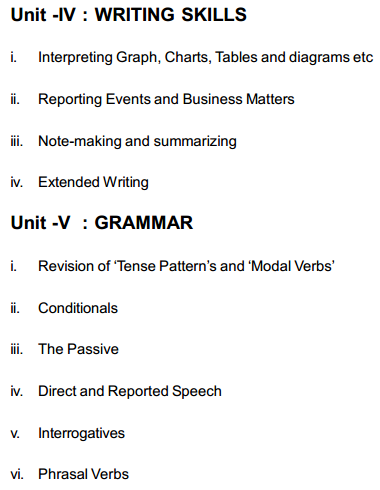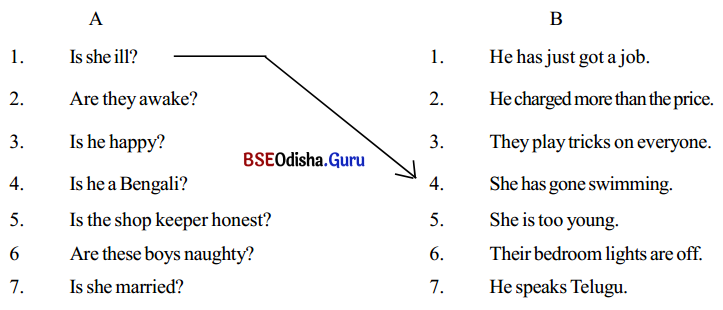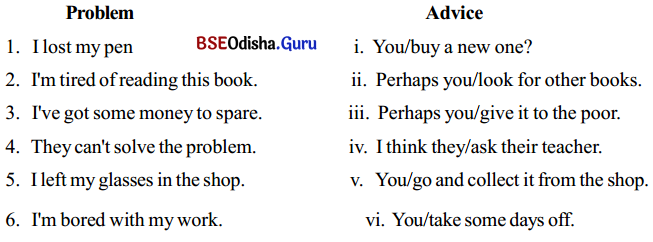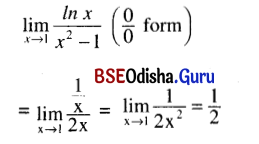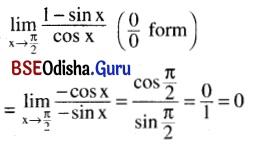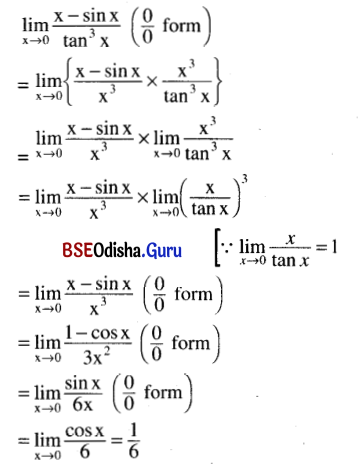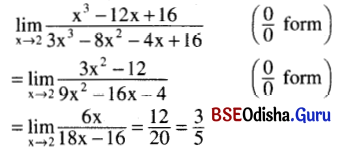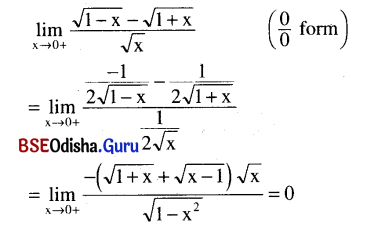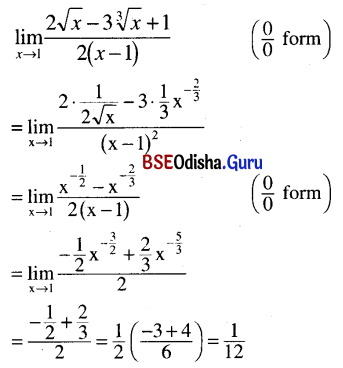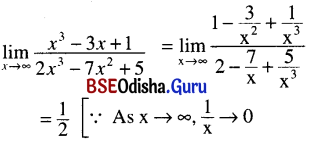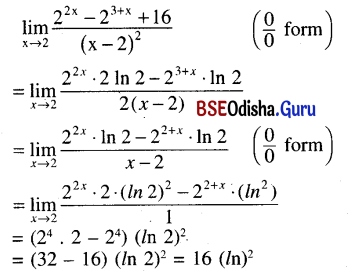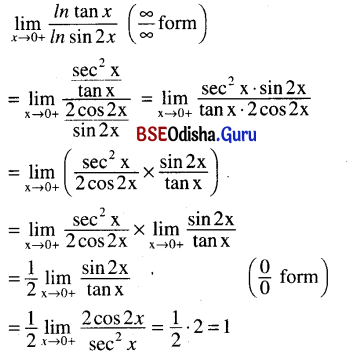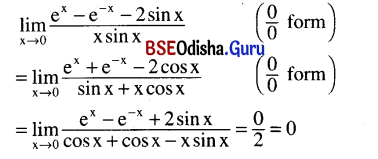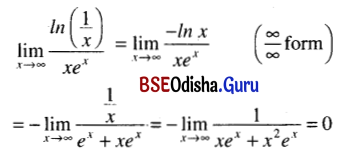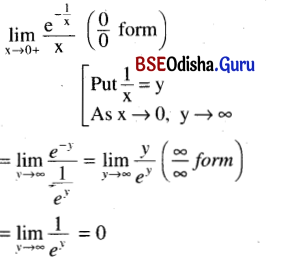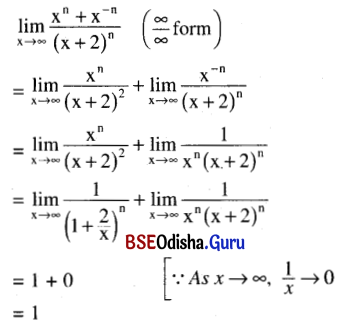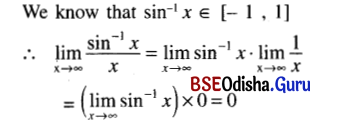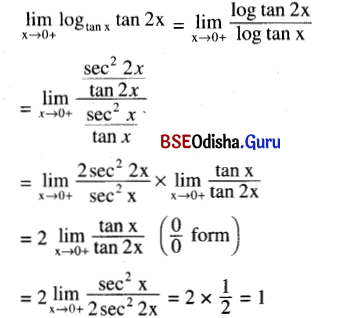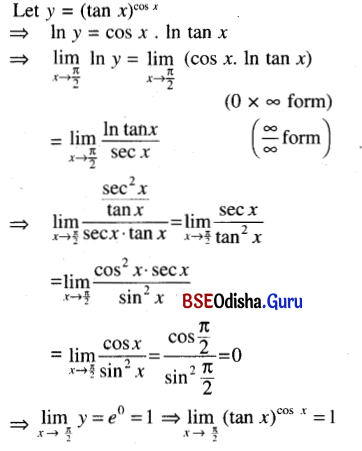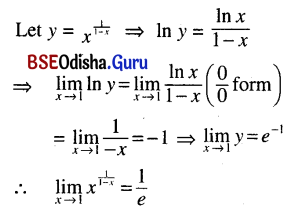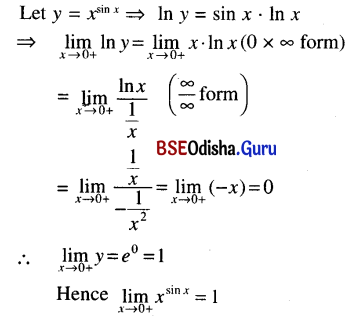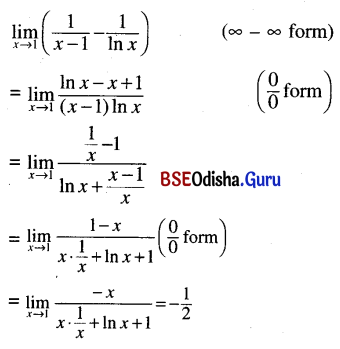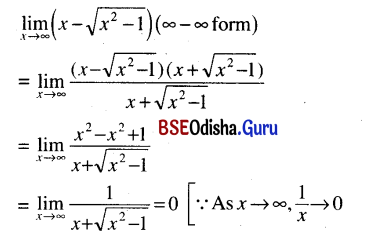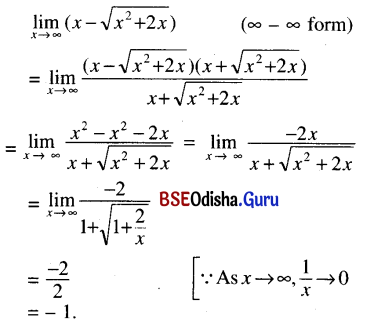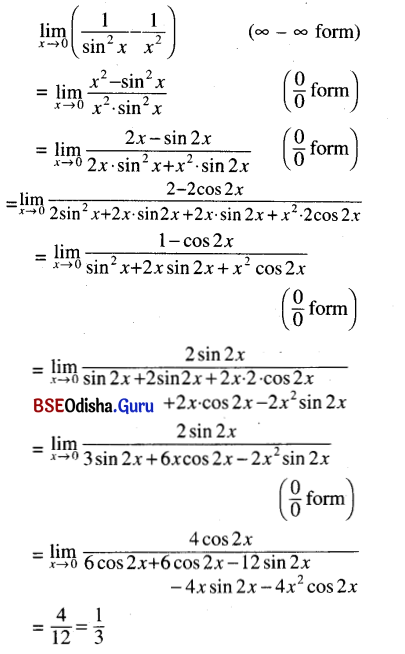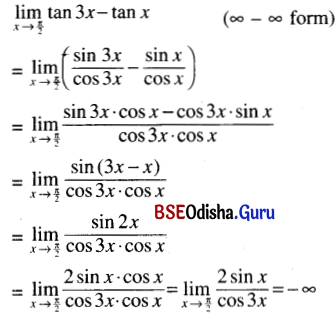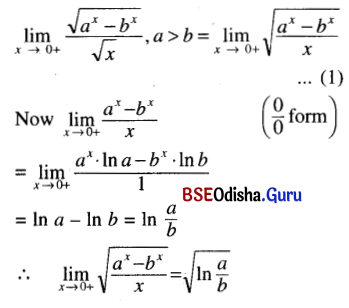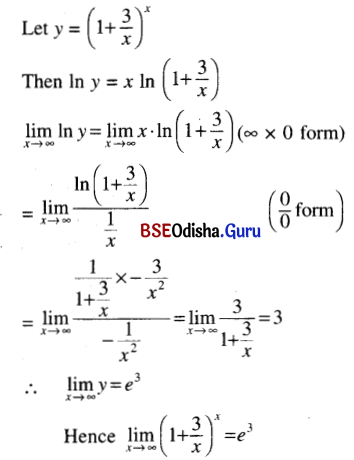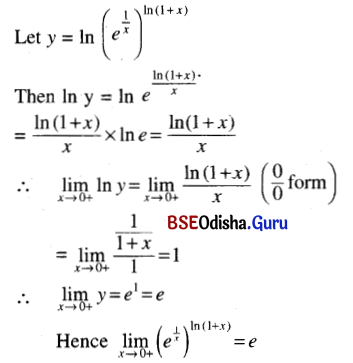Odisha State Board CHSE Odisha Class 12 Foundations of Education Solutions Unit 1 Contribution of Educators Long Answer Questions.
CHSE Odisha 12th Class Foundations of Education Unit 1 Contribution of Educators Long Answer Questions
Long Answer Questions With Answers
Question 1:
Discuss the life philosophy of Gandhi.
Answer:
Gandhi enunciated integral philosophy of fife. He was a naturalist, an idealist,
individualist in one. His ‘Experiment on Truth’ was the outcome of his experience and prominent philosophical activities are his concept of God, truth, doctrines of morality, non¬violence, satyagraha, labor, equality, citizenship, brotherhood of man His life was concerned with:
- His concept of truth.
- His concept of karma.
- His concept of non-violence.
- His concept of satyagraha.
- His idea of centralization.
- His idea of machine.
- His concept of the village.
- His news of morality.
1) His concept of truth – Gandhiji believed in truth to be the ultimate reality and God can be realized through truth. God is truth, and truth is God. He said truth is manifested both externally and it is expressed through the voice of God. He was the pioneer of truth and non¬violence and conquered the brutal force. One can realise god through truth.
2) His concept of Karma – In Gita, there is view on life and karma. Gandhiji was deeply influenced by Gita for a religious dedication to the service of man. Service of humanity is God. Religion is not a part from human activity. Action takes its origin from Brahma and Brahma is present in all kinds of sacrifice of service. To Gandhi, society and social service are an integral part of life and they are sacred activities.
3) His concept of non-violence – Non-violence of Gandhi was equivalent to love. His concept of non-violence retained deeply in Indian spirituality. The concept ofAhimsa or non-violence of Gandhi was a means and that an end. Man is the end of his material, mental and moral well-being and growth.
4) His concept of Satyagraha – Gandhiji’s concept of Satyagraha was dynamic aspect of non-violence and a tool that created a human context for social conflict. Truth is the end and non-violence is the means to human activities.The term ‘ Satyagraha’ is derived from the Gujarati word ‘agrapha’ which means firmness. For Gandhiji satyagraha is dynamic quality of non-violence. Satyagraha for Gandhiji’s way a truth force for acting socially and humanely.
5) His idea of decentralization – Gandhiji was against concentration of power and individualism of capitalism. He wished a kind of society where economic and social structure of decentralization on the basis of industry and agriculture. This is the productivity aim of education.
6) His idea of machine – Gandhiji was not against the machine, but he did not want it to become the master of machine. He opposed strongly machines because it created unemployment and exploitation of the poor workers by capitalists and too much dependence on man on machine. So he suggested to limit the manufacture of machine and emphasized on cottage industry and handicrafts.
7) His concept of the village – To Gandhiji, village is a small group of people, consisting a unit of society. So the village should be self-governing. He considered that it should be self¬sufficient in the matter of its vital necessities of life like food, clothing and shelter. Secondly his village was not an agricultural community, there should be a balance between agriculture and the village industries. He desired to create agro-industrial community.
8) Gandhiji’s gramraj – Village self government was the opinion of Gandhi. His idea of Gram raj or village self government means it is a complete republic independent or its neighbours are independent with other necessaries. Thus, for every villages the first concern will be no caste and hopes to abandon untouchability and create a class less society.
9) His views on morality – To Gandhiji, the end of all knowledge is the development of morality. The society and individual progress through morality, purity in thought, speech and deeds. So a social foundation of truth and purity should be established through education. To him moral education is to be imparted in schools. Morality is the best virtue of humanity. By participation in games and sports discipline in thought and action is maintained.
Question 2:
Write a note on the Educational Philosophy of Gandhi.
Answer:
As a socio-political, reformer, educationist, idealist, naturalist, social leader and practical philosopher, Gandhiji father of the Nation, the apostle ofpeace and non-violence, the champion of Freedom movement led a scheme of education of India known as ‘Basic Education’. In another way it is known as “Nayee Talim”. His educational philosophy is the potent force for social reconstruction. To him true education is “An all round drawing out of the best in child and man” – body, mind and spirit. The chieftenents ofhis educational philosophy are as follows:
- Education should be free and compulsory.
- Craft centred education.
- Self supporting education
- Emphasis on mother tongue.
- Child centredness.
- Emphasis of education on non-violence.
1) Education should be free and compulsory : Gandhi advocated free and compulsory education for 7 to 14 years and wanted to combine primary education with secondary education called it English Less Matriculation Courses. To him democracy will become successful when education will be free and compulsory. It will develop love for creative work. As India is a poor land and 60 % of population are below the poverty line so education should be free and compulsory for them.
2) Craft centred education : He believed in the principle of learning by doing’ of John Dewey. The basic education aimed at providing education on crafts. He introduced basic crafts like spinning and weaving, carpentry and agriculture. Introduction of crafts evoke the spirit of love for work and teach them the dignity of labour. To him the whole educative process be imparted through handicraft. They will leam the motto “work is worship”. It will develop the dignity of labour.
3) Self-supporting education: Gandhiji knew that India is a poor state and it cannot afford to educate the millions. So Gandhi suggested education to be self supporting. The concept of “Karma Yoga” and dignity of labour will help in the intellectual development. So the child should pay labour partly by binding a gap between education and life drawing upon the cultural, social and vocational potentialities. It is a measure of social reconstruction.
4) Emphasis on mother tongue: Gandhi emphasized mother tongue as the medium of instruction. To him the English system of education hinders understanding and clarity of ideas. By mother tongue, the children can express their views clearly and understand others and this would build sound foundation of education.
5) Child centredness: Child-centredness is an important feature of Basic Education which means the children should be taught to the needs, interests, and capacities of children. So the curriculum and the method of teaching are to be developed to the capacities of learners. Different crafts and subjects to be included in the curriculum to meet individual differences.
6) Education based on non-violence: A unique feature of Gandhiji’s education philosophy was the application of the law of non-violence. He wanted to build a classless society and elimination of exploitation. By the scheme of non-violence and peace, he conquered the heart of brutal forces. So his education of philosophy is based on non-violence. He wanted to create a generation that should believe in non-violence.
Question 3:
What should be the aims, curriculum and methods of teaching of Basic
Education?
Answer:
M. K. Gandhi is called an idealist, a realist, a spiritual person in one. He advocated his philosophy of education and put stress on religious education. The main aims of this philosophy are as follows :
- The utilitarian aim.
- The cultural aim.
- Harmonious development aim.
- Complete living aim.
- Character building aim.
1. The utilitarian aims : To fulfill this aim, the basic needs of human life like food, clothing and shelter and self-supporting to be imparted. The self-supporting aspects aimed at self-sufficient and education to meet one’s expenses. It is otherwise known as ‘Bread and Butter Aims ’ of education.
2. The cultural aims: Culture is essential to refine one’s personality.One should have the qualities of mind which should be reflected in one’s own conduct. Such aims helps in the transmission of culture.
3. Harmonious development aim: To Gandhi, education means “An all round draw ing out of the best in child and man, with body, mind and spirit”. To Gandhi, harmonious development means – innate and acquired powers development from social to intellectual. Basic education helps with all round development of personality of the individuals.
4. Complete living aims: To Gandhi, life is very complex. So he formulated a scheme of education which would fit the children to later life and a child to be prepared for complete living. He should learn how to support his living, social adjustment, occupation and self¬reliance.
5. Character building aims: Character building was the chief aim of basic education. To him character is the expression ofthe w’hole personality including the ethical and spiritual aspects. One should subordinate his own interest to the greater interest ofthe society, cooperate his fellow being about a new social order. Such a person is really a man of character. In his aims of education, Gandhi emphasis the building of character.
The individual character will influence the national character.
i)Curriculum: Gandhi emphasized on child centred curriculum. Education should be related to the environment of the child. He opposed English as the medium of instruction and mother tongue as the medium of instruction up to the level of matriculation. To him English hinders the clarity of thought and put a check on self-expression.My mother tongue, one can express his view correctly and understand others. It also helps in the development of nationalism and patriotism
He introduced craft as a part of curriculum and the whole process of education should be imparted through some handicrafts.
ii) Craft: Education should be given through the medium of some craft on productive work. So different handicrafts like weaving, spinning, carpentry, earthen pot building etc.
iii) Activity centred: The teaching of various subjects should be emphasized. Teaching of craft will be the center point and the teaching of all subjects should be related to craft.The co-related teaching methods are to be employed.
iv) Mother tongue: Mother tongue should be medium of instruction. It will help the children for clear expression and clear understanding, develop patriotism and nationalism.
v) Religious and moral education: For the development of personality, character religions and moral education is to be given. All should respect to all religions. Ethics of all religions is to be taught as a part of education. To Gandhi there is need of moral leaders in free India and building modem India.

Question 4:
Discuss the essential features of Basic Education. Explain the gift of Basic education to education.
Answer:
The essential features of Basic education include:
- Free and compulsory education.
- Purposeful activity-centred education.
- Emphasis on mother tongue.
- Self-supporting education.
- Primary importance for village.
- New cooperative regime.
- Dignity of labor.
- Co-operative work.
- Integrated teaching.
- Educates body, mind, and spirit.
1. Free and compulsory education: Basic Education implies a free and compulsory education for all children between the age of 7 to 14 years. It will reduce the disparity among the children.
2. Purposeful activity centred education: Basic Education centers round some purposeful activity or useful and productive craft training which supports self supporting aims of education.
3. Mother tongue: The medium of instruction should be mother tongue of the child. By this the child can express his views fluently and understand others’ views. It also inculcates the spirit of nationalism and patriotism.
4. Self-supporting: Basic Education is aimed at self-supporting. It followed the principles of learning by doing. They earn from their craft work as well, so as to cover their expenses. Thus craft has both educational and economic value.
5. Primary importance for the village: Basic education was primarily devised for the village. Gandhiji say, “In discussing the question of primary education, I have neither to deliberately confirmed myself to the village, as it is to villages that the bulk of Indians population resides’. To tackle successfully the question of village is to solve the problem for the cities also.
6. New cooperative regime: Basic education aims at bringing about a new cooperative regime in place of the present in-human regime based on exploitation and violent forces.
7. Dignity of labor: Basic education curriculum inculcates the virtue of dignity of labor, a keen sense of discipline, and a great sense of responsibility. Labour-centred education reduces disparity among pupils. It helps with self-employment.
8. Cooperative work: In the scheme of Basic education both the teachers and pupils work for community development and social progress.
9. Integrated teaching: In Basic education, all the subjects are taught in an integrated way. All the instructions are co-related. It seeks to develop the child as a whole. The child is taught with co-related teaching methods of all subjects like math, general science, social sciences, language, drawing and paintings etc. It helps the harmonious development of the child.
10. Educates body, mind, and spirit: Basic education is meant to educate the body, mind and spirit with an unique relation among them. It seeks to develop the child as a whole.
Question 5:
Discuss the causes of downfall of Basic education.
Answer:
Inspite of the merits of Basic education, the scheme was criticised by the richer classes, educationists and suffer from a number of limitations. After the death of Gandhiji the scheme was given a death-blow. The most important reasons of the failure of Basic Education are as follows :
- The Unclear Concept.
- Emphasis on Idealistic view.
- Emphasis on Economic aspects.
- Compact Area approach. ‘
- Absence of Text Books.
- Lack of Trained Skilled Teachers and Textbooks.
- Faculty timetable.
- Costliness of Basic Education.
- Opposition of Traditionalists.
- Matriculation of Minus English.
- Lack of Research.
1) The Unclear Concept: In that period most of the educationists the common people, education administrators as well were not clear about the concept of Basic Education. They were confused of craft education and mechanical education. The common people could understand nothing. In that period, there was no provision of propagation and no mass media system to highlight the program. So the concept of the scheme could not touch the common people and got failure.
2. Emphasis on Idealistic Approach: The scheme laid stress on some idealistic practices like manual work. Such scheme of education was not accepted by the British and the intellectuals because they educated people do not appreciate that their children could do any manual labour. They sent their children to public schools and English medium schools. So the confusion is created.
3. Emphasis on Economic Aspects: In Basic Education, too much emphasis was given on economic aspect. The craft centredness was not accepted by the intellectuals as well as educationists. The productivity activity of self supporting aspect exploits the child labour and craft work puts emphasis on economic aspect. The students become money minded. The guardians felt that their children were turned into laborers, so they opposed the basic ideals of craft.
4. Compact Area Approach: Basic schools were opened in some specific areas, especially in rural areas but not in town areas. The scheme was worked out in a limited area on an experimental basis. So compact area approach was a major cause of the failure of such education system.
5. Absence of Text Books: Basic scheme of education emphasized on craft education. It was a mechanical education. Text books were riot emphasized and no text book was prepared as there were no writers to prepare textbooks on craft training. It was another major causes of the downfall of Basic Education.
6. Lack of Qualified teachers: It was a new type of education like craft. The traditional teachers failed to understand the new pattern of education and the curriculum prepared by Dr. Jakir Hussain. Qualified trained teachers were not available as it was mechanical teaching. There was no provision of teachers’ training. So lack of qualified trained teachers, the Basic Scheme of Education led its downfall.
7. Faculty Time Table: In Basic Education much more was invested or devoted for craft work and other subjects were neglected. In a Basic School 2/3rd. of the time was utilized in craft work. On the timetable, academic subjects were taught after craft work. So academic subjects were neglected. Agricultural students become tired to their academic work. So the faulty timetable was an obstacle of spreading Basic Education.
8. Costliness of Basic Education: As Basic Education needed equipment, so more initial cost was required to purchase craft equipment. There were no funds to meet such expenses and the Govt, could not afford it so it led its downfall.
9. Opposition of Traditionalists: The dream of Gandhi to build a classless society was strongly opposed by the higher class people. So the traditionalists and conservatives were afraid that the new social order would upset their position and so they strongly opposed the system of education.
10. Matriculation Minus English Course: Gandhiji emphasized that English should not be taught to the students in matriculation stages. But the richer classes opposed this and did not prefer to admit their children in such a school. So the strength of the school reduced day by day.
11. Lack of Research: No research activities were encouraged and no research centers were set up. So lack of research, newer methods of teaching, and techniques the Basic Scheme of Education led its downfall.
Question 6:
Discuss the aims of education of Satyabadi School.
Or Explain Gopabandhu’s Educational thoughts.
Or Discuss the contribution of Gopabandhu to the present education.
Answer:
Gopabandhu believed in universal education. The organizers of national Education League opined that everyone has the right of being educated, just as the rays of sun and moon. One shared equally by the people. Pandit Nilakantha Das emphasized classless society education. The people of Odisha are poor and they cannot afford for the education of their children. So Gopabandhu proposed an education that should be ideal, forced, and inexpensive. In 1909 he set up a School at Satyabadi named as Open Air Schooling based on the ideals of Gopabandhu.
The aims, main tenents and educational thoughts of Gopabandhu are discussed below.
1. In-expensive Education: Gopbandhu was hilly aware of that India being a poor country and Odisha a poor province it cannot pay for education of the entire population. So the cost of education to be reduced. He experimented with the groove school on the lines of ancient Gurukul System with no school building and tuition fee payable by the students should be minimum. They should lead a simple and austre life in the school hostel.
2. Idealistic Education – Gopabandhu believed that it is not a costly school building but the idealistic and dedicated teachers who can make a good school were appointed. It is remarked that a school does not consist of only buildings, chairs, and tables, there must be well-educated, sincere and idealistic teachers. No education worthwhile can be imparted without good and efficient teachers.
3. Practical Education – Gopabandhu was cirtical about the prevailing system of education which does not equip the individual to meet the requirement of life. He wanted education to be practical which should make the students economically independent.
To him the present system of education failed to prepare our students for the struggle of life. So they should be taught crafts to maintain their livelihood and they should be taught physical exercise, industry and agriculture etc.
4. Religious and Moral Education: Gopabandhu believed in the all round development of the personality of an individual through education. The students must be taught craft skills in order to capable them to earn their living. There is need of civilized and cultured individuals. So there is need of religious and moral instructions for morality.
5. Social Service and National Integration: Gopabandhu did not stress on individuality. To him, individual is a part of society. So education would enable the individuate to perform the social functions as efficiently as successfully as possible. For him education is a preparation for a life of dedicated social service in the society or nation.Through this education, he wanted to bring about emotional and national integration. In the community dinner in his hostel, every day, high or low sit together and take meals.
6. Women’s Education – Gopabandhu was revolutionary in nature. He knew that in the backward and traditional society of Odisha,a great deal of courage is essential to advocate women’s education. To him, women are the wealth of the family as well as the wealth of the nation. They are the Goddess of family life. If women are educated, they will take care of their children.
7. Mother tongue as the Medium of Instruction – Gopabandhu emphasized on the importance of the mother tongue in the education of a child. It is essential to develop his mental powers. It is also essential to realize the intellectual cultural and spiritual aims of education So education should be imparted through the mother tongue. By mother tongue, the creative powers is to be developed.
Question 7:
Discuss the main features of Groove School ?
Answer:
The main basic principles in which the groove school grew up includes the following:
- Open Air School.
- Free Education.
- Ideal Teachers.
- All round development of Personality.
- Teaching Craft Skills.
- New Methods of Teaching.
- Community dinner and Cultural programmes.
- Emphasis on co-curricular activities.
Importance on Mother’s tongue.
1. Open Air School: Gopabandhu knew well that Indians cannot afford and spend the amount of money in constructing school building and to reduce the expenditure in education without reducing the educational standards the attempts been made opening a groove school on the lines of old Gurukul system Thus, it is an Open Air School similar to Shantiniketan.
2. Free Education: Education was free and minimum fee was charged. The attempts to set up school, an old Gurukul system and the students will lead a simple austere life.
3. Ideal Teachers: Gopabandhu put high premium on the quality of teachers. Gopabandhu aimed at ideal education and teachers should be ideal sacrificing in nature. The teachers of Satyabadi school had voluntarily given up the pleasures of life for the purpose of rendering service to the community.
4. All round development of Personality: Satyabadi system of education aimed at the development of all the aspects of the personality. He emphasized character building inculcation of social values, virtues qualities of good citizenship, patriotism, brotherhood and spirituality. For the development of good qualities various co-curricular activities, debates, excursions, physical exercises, games and prayer assemblies are essential.
5. Teaching Craft Skills: The system of education strongly opposed the system of education bookish and aimed at imparting education of art and craft skills. Then the children will be able to prepare for the future, learn the struggle for life. Craft education may enable to earn their livelihood.
6. New Method of Teaching: Satyabadi Vana Vidyalaya was a residential school and the teachers and students stay together, in the hostels. The Headmaster, asks the teachers to submit their class notes to him for supervision. The teachers and the Headmasters, sit together and discuss mutually the course. The programs like debate, excursion etc. are continued.
7. Community dinner and Cultural program: The elected Secretary (from the boarders) manage the hostel The school and hostel for self-discipline democratic management and ideal student life. The students and teachers take dinner together. It teaches them community living.
8. Emphasis on co-curricular activities: To bring an all around development of personalities of the students various types of co-curricular activities were arranged in the Satyabadi School, such as (i) Literary activities (ii) Debates and games (iii) Prayer assembly (iv) Physical exercises (v) Literary magazines etc. Debates are aimed at oratoral abilities of the students. Physical exercises brings about the development of character, discipline and virtues. Prayer assembly develops the discipline and moral instructions.
9. Importance of Mother tongue: Mother tongue emphasized on the medium of instruction. It helps in understanding and developing nationalism, and patriotism and the child can express his views clearly and understand others.

Question 8:
Explain, the causes of downfall of Open Air Schooling or Satyabadi Vana Vidyalaya.
Answer:
Like the downfall of Basic Education of Gandhi, for some reasons Satyabadi Vana Vidyalaya led its downfall. The chief causes are:
- Lack of local support and unclear concept.
- Economic condition.
- Lack of help of the Govt.
- Participation of Gopabandhu in Indian National Movement.
- The death of Utkalmani.
1. Lack of local support and unclear concept – Satyabadi Vana Vidyalaya was surrounded by conservative villages. Conservative people and Brahmin society. Such conservatives did not appreciate the idealistic education system of Gopabandhu. Pandit Nilakantha Das wanted to build a classless society education which was a stroke to the conservatives.
The conservatives opposed this and they do not like to read their children with other backward-class children. They wanted to continue the superstitions.Lack of local support the enrolment of children is reduced.To oppose Gopabandhu’s system of education in 1912 on March 22, the conservatives fired the school and the main property of school library was destroyed. Such an incident shook the strength of the school.
2. Non-cooperation of the Govt.: It was not a traditional education system nor followed the British system of education and opposed the older beliefs, superstitions and conservatism. It is filled with idealism, patriotism, nationalism and social service programs.It aimed at creating leader for the state. So the British opposed it. No Govt, grant lias come and the application for Govt. Recognition was canceled. The school was transferred under Calcutta University in 1916 and then to Patna University in 1917, but it could not get the Govt. help.
3. Economic Condition : The third cause of the downfall of Open Air Schooling was the economic condition of the school. In 1921 Vana Vidyalaya was transferred into a National School. But the Govt, grant only two hundred rupees per year was refused and cut off very relationship from Patna University. In 1923, it turned to a National College and become autonomous. But it did not exist long. It suffered from the financial crisis. The teachers demanded to merge the college with the University. For this Gopabandhu remained away from the college. But the colleagues failed to continue the college for which it led its downfall.
4. Participation in Non-cooperation Movement: In 1920, Utkalamani joined in the Non-cooperation movement. He invested all his time and resources in the Freedom struggle. He found no time and resources to invest in groove school. Thus, the school led its downfall
5. The Death of Utkalamani: The day before the World famous Car Festival on June 17, 1928, Gopabandhu died in an immature death. The glorious chapter of Odia’s history’ came to an end. The next generation did not give any importance to the institution and just five years after the death of Utkalamani, the other Satyabadi Panchasakhas died one after another, the school was neglected and led its downfall.
Question 9:
Discuss the educational philosophy of Sri Aurobindo.
Answer:
Sri Aurobindo dedicated his whole life for society and education to provide contribution to travel towards divine perfection and to express the power, harmony, beauty and joy of self-realization.By education, he means that which will offer the tools whereby one can live for the divine for the country for oneself and for others. His principle of the philosophy of education, the awareness of man as a spiritual being.
Integral Education – Aurovindo’s integral education means integral growth of the individual’s personality. The function of education is to study the mind of individuals, people, nature, the universe. He put more emphasis to study the mind.
The human mind consists of four layers. They are :
1. Chitta – the storehouse of memory.
2. Manas – the sixth sense like – sight, sound, taste, smell, touch.
3. Budhi – thought or intellect.
4. Truth – Satya
Integral education, attempts to the integral development of physical being, vital beings, psychic being and mental being about a transformation of man into a spiritual being.
Aurobindo’s philosophy of Education are:
1. Education of the Physical being: To Aurovindo beauty is the ideal of physical life such as (i) To discipline and control the physical function (ii) For harmonious development of the body and physical movements (iii) Rectification of defects (iv) To awaken the body consciousness one has to undertake physical exercises. The factors of spiritual discipline, service, bhakti, and yoga are essential physical education. Restlessness is the important aspect to control the body and to achieve. Concentration physical education also controls sex drives or impulses. Emphasis is given on games and sports which an renew physical and higher forms of energy, develop tolerance, self control, friendliness etc.
2. Education of the Vital Being : It helps in the development of character. Vital education emphasizes on the vital being of man by which the man be able to understand the inner and outer world. It develops self observation. Vital being means utilization of the sense organs which help us to receive knowledge. The senses like a sight hearing, small, touch, taste and mind should be trained. Vital education also aimed at the aesthetic personality development.
3. Education of the Mental Being: Mental being education emphasizes on mental science and concentration. The mother says to silence the mind, one has to take the help of classical yoga. By yoga, one can acquire mastery of the mind. So knowledge of the education of mental being which helps is the gradual liberation from ignorance.
Mental education has three-fold functions:
i)To gather old knowledge.
ii) To discover new knowledge.
iii) To develop the capacity use and apply the knowledge acquired.
Through the application of knowledge, the pupil develops cognition, ideas, intelligence and mental perception. For this man becomes the source of knowledge.
4. Education for Psyche Being: Psyche being is the psychological centre of mind. The function of education is to enable man to become conscious of the psychological centre which is key to an integral personality. Psyche education is to enable an individual to see his soul grow in freedom. It supports the vital, physical, and mental being. When an individual develops psyche consciousness, he understands life and himself.
To him the psyche being is a spiritual personality put forward by the soul in its evaluation. The business of education is to develop the capacity of psychological being towards a realization of potentialities. Psyche being is possible through yoga or tapasya of love. As a result of this yoga one can attain liberation from suffering.As a result four-fold approval like the physical, the mental, the psyche and love in the ii idi v ideal student, the man gets liberation from the material world, desires, ignorance and suffering.
A tota 1 spiritual education is the goal of education and spiritual transformation of man is the goal o f integral education.
Question 10:
Discuss the philosophical thoughts of Rousseau.
Answer:
Rousseau’s philosophical thoughts are related to Naturalism and Negative Education.
1) His Naturalism
a) God has made all humans good but when they come in contact with society they become spoiled. In order to change them again into good, we should bring them back to nature.
b) In the beginning of human civilization, man was happy and good, but now he is unhappy. If he goes back to nature, he will again be happy and good. Thus, a child be educated and developed according to his natural tendencies. Society and school has no role to play in the process.
c) He did not like old values and traditions of the society. According to him, social relations can be brought about by destroying these values.
d) There are three main forms of naturalism such as Social, Psychological and Physical. In his social naturalism, he devises education as a method to mold the society. He opined that we could not become a man and citizens at the same time. Out of two options, we should become a man only. Thus, the individuality of man is honored by him. Psychological naturalism meant that the child should be given chance to develop on the basis of his inner feeling and natural tendencies and experiences gained from contact with others are harmful and unnatural.By physical naturalism, Rousseau means that child should be given chance to come in contact with birds, animals, and other physical objects of nature and learn in the process. This learning will make him free from evils.
e) He opposes the organization of education in social foundations. Thus he opposed school/education in the formal sense and advocated an individual basis of education.
f) He opposed too all sorts of habit formation in the child. It is because this can make a child traditional.
Thus, Rousseau’s Naturalism is fully of many unnatural and impracticable ideas and he himself realized it but he put three ideas with such a force that is influenced not only the society of Europe but also the educational system of the period.
2) Negative Education
In the 17th. century, Europe, man was considered bad by nature. So efforts were made to change the nature of man by imparting religious education.
Rousseau went contrary to this believing infallibility of man and proposed the idea of Negative Education. By this education he means not teaching truth or virtues to a child but shielding his heart from evils and mind from errors. The feature of his negative education are given below:
a) Nothing against the interest, attitude on age of the child should be taught. He should be given full freedom to choose his own curriculum.
b) The education of a child should be based on his natural tendencies and stages of development by using different organs and senses of the child. Mind should be less taxed for the purpose. Mind should be inactive toll the child develops discretion power in him thus he emphasized, the training of senses by keeping the mind idle.
c) Child should be protected from outside environment to keep him alien to vices. In this way, there will not be any need to impart knowledge of virtues to the child. Virtues may be taught of the later stage of life.
d) The child should not be taught anything at all, especially from books. Small children should learn from nature itself.
e) Thus by Negative Education, Rousseau opposed not only the mental development of the individuals/child but he also opposed moral and spiritual development.
Question 11:
Discuss the different phases of education of Emile as supported by Rousseau. Curriculum, methods of teaching and discipline.
Answer:
Rousseau’s programme of education for Emile is devised into different phases and Rousseau had divided the whole programme of education curriculum on the basis of the development stages of human child.
(i) Infancy (from 00 to 5 years): At this stage instead of giving the child controlled information of various subjects it is better to pay attention to the development of child’s body and his sense organs. He should be allowed to play with whatever things he likes. The dresses should be made for free movement. His toys should be cheap ordinary and natural like leaves, plants flowers, stems etc. According to Rousseau Emile should be given a negative Education druing infancy.
(ii) Childhood (5 to 12 years): Rousseau opposed the use of textbooks during this period. The child should be given chance to leam everything through observation and experiences. These experiences develop sense organs, which will lead to the development of mind and power of reasoning. He should be allowed full freedom to use his sense, the sense organs, the eyes to be trained to measure height, weight, and distance.
(iii) Adolescence (12-15 years): During this period natural curiosity of the adult develops. So he should be taught natural science and languages, mathematics, music, painting and social services. He should use maps in learning geography.
(iv) Adulthood (15 – 20 years): The organs become active with a maturity of mind and intellect he should leam social and moral education like objects of social services.
His Discipline: Rousseau advocated complete freedom, left free to the environment.
Self discipline is learnt in the process of experiences. There is no scope ofgiving any punishment to the child but natural process of feed back in stills discipline in him.
Question 12:
Dsicuss the life philosophy of Rousseau. Give his educational aims and ‘Self Education’ and curriculum.
Answer:
Life Philosophy of Rousseau: Jean Jacques Rousseau (1712 -1778) lost his mother just after his birth and his father brought him up but he could not look after him. Rousseau fell to prey to all sorts of bad habits. He originally belonged to Geneva and the beauty of that place lured him to use it and it made him a careless man.
Rousseau got matured. He hated the society for its evils. Evil customs and artificial traditions and tried to retun it on the line of nationalism and wished everybody shun the evil society and live with nature.
Out of five books, “The progress of arts and science”, “New Heloise”, Confessions, ‘Social Contract’ and ‘Emile’ are unique and the last two books ‘Social Contract’ and ‘Emile’ brought great name and fame to him.His ideas of education can be seen in Emile. It is a novel whose hero is Emile and the heroine is Sofia. In his book, Rousseau keeps Emile away from society and culture and leaves him under the guidance of an ideal teacher in the natural environment and Emile is educated in an atmosphere of natural beauty. There are five chapters in the book. The first chapter describes education of Emile is in fancy, childhood, adolescence and adulthood and the last chapter deals with the education of Emile’s wife Sofia.
People reacted against his book “Emile very sharply. France and Switzerland banned it end it was put into the fire at many place in Europe consequently. Rousseau had to leave France for England in 1766.After 11 years of exile, he returned to France and wrote his last book “Confession”. Rousseau’s philosophical thoughts are related to Naturalism and Negative Education.
Educational Aims: Rousseau emphasized on the following aims of education, l) We are bom weak and we want strength. We are poor and we want help. Whatever we do, not have is to be given by education is the ultimate aim of education.
- To establish harmony between man, object and nature.
- Child attains pleasure by using his organs and senses and by applying his strength. So the aims of education is to develop his various innate powers by helping him in his natural activities.
- Books are not end of education. They are only means and the child is the end. The aim of education is to develop the child to be fullest for a complete and happy life.
His Self-Education:
i) He opposes strongly the imposition of ideals and morals into the mind of the child from
outside. Children should learn these things through activities. It is because the children are more interested in activities rather than sitting idle and hearing lectures. At that stage, helps enough power of assimilate between construction and destruction. His only concern is to bring about change will form through any activity.
ii) Body can become strong through physical exericse and mind also become strong through self study. In self-education the child can proceed further according to his own physical and mental capacities.
iii) Only that knowledge gets retained for a longer period, which is learned from self-experiences. We should accept the experiences of others only after our own wisdom.
iv) Blind fellowship is not accepted at all. A child should not learn a thing because he has been asked to do so but he should learn oniyit in the process of his self study.
v) Special emphasis is to be given on the physical development of the child.
Curriculum
Rousseau was against the fixed curriculum, the child should be educated through activities and first-hand experiences.During infancy positive instructions to be imparted with good health training of senses and cultivation of natural habits. At the stage of childhood provision of in parting physical education through a set of gymnastics and the exercises training of senses.
At the stage of boyhood, the chief intellect is to be trained through teaching of good sense of physical senses, language, mathematics, manual works, social relations, music and drawing.At adolescence morality of the individual is to be trained through teaching of good education and by activity method and occupation. Moral education subjects are : history, religion, aesthetics, physical culture and sex education etc. are included in the curriculum at the adolescence stage.

Question 13:
Discuss John Dewey’s contribution to educational thought and practice.
Answer:
John Dewey is one of the greatest educationists of the modem age. He has revolutionized the exponent of pragmatism.
Meaning of Education to John Dewey: John Dewey considered individuality as the aim of education. According to him, all education proceeds by the participation of the individual in social consciousness of the race. The educative process, according to John Dewey has two aspects – Psychological and Sociological because every individual is a psychological as well as social being. So no aspect can be neglected in the process of education.
- Education as life: According to John Dewey education is a process of living. So the school experiences should have a resemblance with life outside the school and the school functions as a society in miniature form.
- Education as Growth: Education is a continuous process that adds to child’s experience resulting in the growth and development of the child. It helps the child to grow to its full extent.
- Education as Reconstruction of Experience: Every generation inherits certain experiences from its previous generation. These experiences are to be modified according to the changing situations through education.
- Education as a Social Process: Man is a social being and education socializes to human child. Right education helps the child make suitable adjustments with his social environment.John Dewey and Aims of Education: John Dewey is of the opinion that education process no aim beyond itself, it is its own end. There are no fixed aim of education to John Dewey.
Because, human life changes with the changes in time, place and situations and education should cater to the changing nature of human life. Education should therefore aim at cultivating a dynamic and adaptable mind in the child so that he can suitably adjust with his changing environment. Education should also create new value for the child. Education should aim at inculcating democratic values and attitudes in the child.
John Dewey and Curriculum: Curriculum according to John Dewey should reflect the child’s social life and social activities. It should be flexible, and changeable and it should take into consideration the child’s interests and educative experiences. As per example the curriculum at the primary stages should be based on the fourfold interests of the small child, interests in conservation and communication interests in inquiry interests in making change or construction and interest in artistic expression. Hence subjects like reading, writing, counting, handwork and drawing etc. are to be included at this stage.
The curriculum at higher students of education must have provisions for the environment and reorganization of past experiences. It just stimulates the learner to acquire new experiences and new ideas to they learned ones. John Dewey has also put emphasis on curriculum. This means each subject should be linked with the other and each should also related to the day life of the child.
John Dewey and Method of Teaching: John Dewey put emphasis on learning by doing. He stressed project method and this method is meant for the child. Earning was to be emphasized on teaching. The students should be free to carry on their whole planning and activity. Learning should be incidental and an outcome of the purposeful activity.
John Dewey and Discipline: John Dewey believed in the theory of free discipline and self-discipline. Discipline imposed from outside is directive with eyes of the John Dewey. Discipline should be social in character. The natural impulses of the child should be channelized in a socially desirable way. The main function of school discipline is to cultivate in the children’s social attitude, habits and ideal conduct through cooperative activity.
John Dewey and Role of the Teacher: In John Dewey’s system of education the child occupies the central position. The teacher is the friend, philosopher and guide of students. The teacher has to observe the pupil’s planning, encourage their activity and provide them the necessary opportunity and environment. John Dewey’s teacher is free to frame his own curriculum and carry on the administration ofhis own school.
Read More:
Sebi Approved Algo Software
